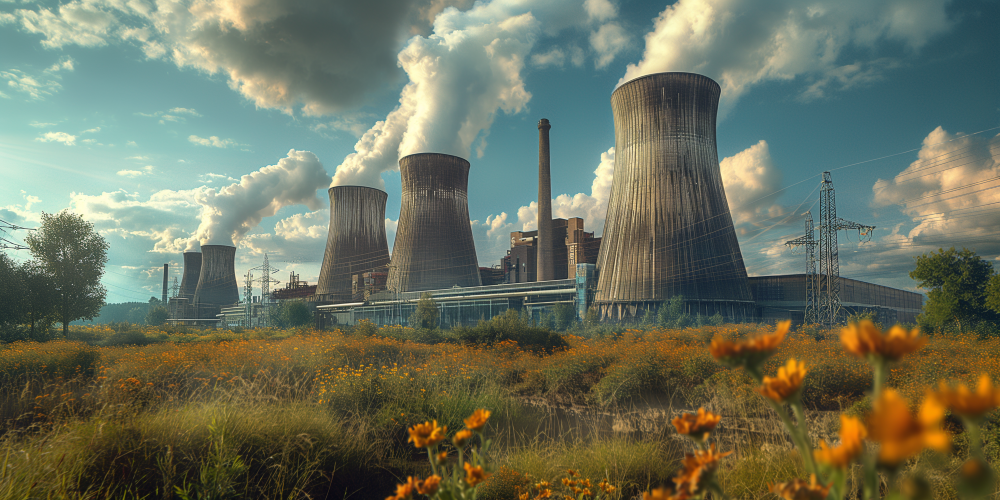The United Kingdom has long been a pioneer in industrial and technological advancements. As global concerns about climate change intensify, the UK has
The United Kingdom has long been a pioneer in industrial and technological advancements. As global concerns about climate change intensify, the UK has redirected its focus towards sustainability and renewable energy. This transformation has positioned the country as a leader in renewable energy innovation and implementation.
This blog post will explore the UK’s renewable energy projects, highlighting their progress, impact, and future potential.
Overview of Renewable Energy in the UK

The UK’s renewable energy journey began in earnest in the late 20th century, gaining momentum with the establishing of the first wind farm in Delabole, Cornwall, in 1991. Since then, the renewable energy sector has expanded significantly. As of 2023, renewable sources accounted for approximately 42% of the UK’s electricity generation, marking a significant shift from fossil fuels. Key milestones include launching the world’s largest offshore wind farm, Hornsea One, and substantial solar and biomass energy investments. Technological advancements and robust government policies drive this growth to reduce carbon emissions and promote green energy.
Types of Renewable Energy Projects
Wind Energy
Wind energy is a cornerstone of the UK’s renewable strategy. The country boasts some of the best wind resources in Europe, especially offshore. Onshore wind farms, such as Whitelee in Scotland, have significantly contributed to the national grid. However, it is the offshore wind farms that have truly revolutionised the sector. Projects like Hornsea One, located off the Yorkshire coast, and the upcoming Dogger Bank Wind Farm harness the powerful North Sea winds, generating enough electricity to power millions of homes. The UK’s offshore wind capacity is set to grow even further with ambitious plans to quadruple capacity by 2030, reflecting a strong commitment to harnessing this abundant resource.
Solar Energy
Solar energy, while less dominant than wind, has seen rapid growth in the UK. Large-scale solar farms, such as West Raynham, and widespread rooftop solar installations have added significant capacity to the energy mix. Innovations in solar technology and decreasing costs have made solar power an increasingly viable option, even in the UK’s relatively cloudy climate. The government’s Feed-in Tariff scheme, which ran from 2010 to 2019, was crucial in encouraging homeowners and businesses to invest in solar panels. Today, solar energy continues to grow, driven by the falling costs of photovoltaic cells and increasing public awareness of renewable energy benefits.
Hydro Energy
Hydropower, though a smaller component of the UK’s renewable energy mix, plays a vital role. Traditional hydropower plants in Scotland, such as the Sloy Dam, contribute a steady renewable electricity supply. Additionally, innovative tidal energy projects, like the MeyGen tidal stream project in the Pentland Firth, are exploring the potential of the UK’s extensive coastline. Tidal energy is particularly promising due to the predictability of tidal patterns, offering a reliable renewable energy source. The success of these projects could pave the way for further development in this area, contributing to a more diversified and resilient energy system.
Biomass
Biomass energy, derived from organic materials, is another key pillar of the UK’s renewable energy strategy. The Drax Power Station, which has partially converted from coal to biomass, is one of the largest biomass facilities in the world. This transition reduces carbon emissions and provides a steady, reliable energy source. Biomass helps reduce landfill waste by utilising agricultural residues, wood pellets, and other organic materials. It plays a crucial role in the UK’s energy transition by providing base-load power that complements the intermittent nature of wind and solar energy.
Emerging Technologies

The UK also invests in emerging renewable technologies like wave power and hydrogen fuel cells. Projects such as Wave Hub in Cornwall are exploring the potential of wave energy, leveraging the UK’s powerful coastal waves. Hydrogen initiatives are being developed to provide clean fuel alternatives for transportation and industry. For instance, the H21 project aims to convert the natural gas network in Leeds to hydrogen, demonstrating the feasibility of large-scale hydrogen infrastructure. These emerging technologies promise to reduce carbon emissions further and enhance energy security.
Notable Projects
Several projects have made significant contributions to the UK’s renewable energy landscape:
- Hornsea One: As the world’s largest offshore wind farm, Hornsea One can generate 1.2 GW of electricity, enough to power over a million homes. Its success has paved the way for further offshore developments, such as Hornsea Two and Three.
- West Raynham Solar Farm: This 50 MW solar farm is one of the largest in the UK, demonstrating the scalability and potential of solar energy.
- MeyGen Tidal Project: Located in the Pentland Firth, MeyGen is the world’s largest planned tidal stream project, with a capacity of 398 MW. This project showcases the potential of tidal energy to provide reliable, predictable power.
- Drax Power Station: Transitioning from coal to biomass, Drax now generates a significant portion of its electricity from renewable sources, setting an example for energy transition.
Government Policies and Incentives

The UK government has played a pivotal role in promoting renewable energy through various policies and incentives. The Climate Change Act of 2008 set legally binding targets to reduce greenhouse gas emissions by at least 80% by 2050, recently updated to a 100% reduction by 2050. The introduction of Contracts for Difference (CfD) has provided price stability for renewable energy projects, encouraging investment and reducing financial risk for developers.
Additionally, the Renewable Heat Incentive (RHI) and the previous Feed-in Tariffs (FiTs) have supported smaller-scale renewable projects and individual households in adopting renewable technologies. These schemes have incentivised the installation of solar panels, heat pumps, and biomass boilers, contributing to the decentralisation of energy production.
The government’s commitment to phasing out coal by 2024 and achieving net-zero emissions by 2050 further underscores its dedication to a sustainable energy future. Although short-lived, The Green Homes Grant aimed to improve energy efficiency in homes, highlighting the government’s focus on reducing energy consumption and increasing renewable energy generation.
Economic and Environmental Impact
Renewable energy projects have brought substantial economic benefits to the UK. The sector supports over 250,000 jobs in manufacturing, installation, maintenance, and research. Regions like Scotland and the North East, where many renewable projects are located, have seen significant economic boosts. The sector has also attracted substantial domestic and foreign investment, contributing to the UK’s economic growth.
Environmentally, the shift to renewables has led to a marked reduction in carbon emissions. In 2020, the UK’s emissions fell by 9% compared to the previous year, largely due to the increased use of renewable energy. This transition mitigates climate change and improves air quality and public health. Renewable energy reduces dependence on fossil fuels, decreasing harmful pollutants and greenhouse gases.
Challenges and Future Outlook

Despite the progress, the renewable energy sector faces several challenges. Funding and investment remain critical, particularly for emerging technologies like tidal and hydrogen energy. The intermittency of wind and solar power necessitates advancements in energy storage solutions and grid management to ensure a stable and reliable energy supply.
Regulatory hurdles and planning permissions can also slow down project development. Community opposition to onshore wind farms and solar installations highlights the need for effective stakeholder engagement and education. Balancing the interests of local communities with the broader benefits of renewable energy projects is crucial for sustainable development.
Looking ahead, the future of renewable energy in the UK is promising. The government’s Green Industrial Revolution plan, announced in 2020, aims to create 250,000 jobs and invest heavily in offshore wind, hydrogen, and advanced nuclear technologies. Innovations in battery storage, smart grids, and energy efficiency will further enhance the reliability and integration of renewable sources.
Emerging technologies like floating wind farms, advanced solar panels, and next-generation biofuels offer exciting prospects for the future. Collaboration between government, industry, and academia will be essential to overcome challenges and drive further innovation in the sector.
Final Thoughts
The UK’s renewable energy projects exemplify a commitment to a sustainable future. The UK is a leader in renewable energy, from the vast offshore wind farms harnessing the North Sea’s power to the innovative tidal and biomass projects. While challenges remain, the economic and environmental benefits are undeniable. The UK is advancing towards a cleaner, greener future by continuing to invest in and support renewable energy.



















































































































COMMENTS